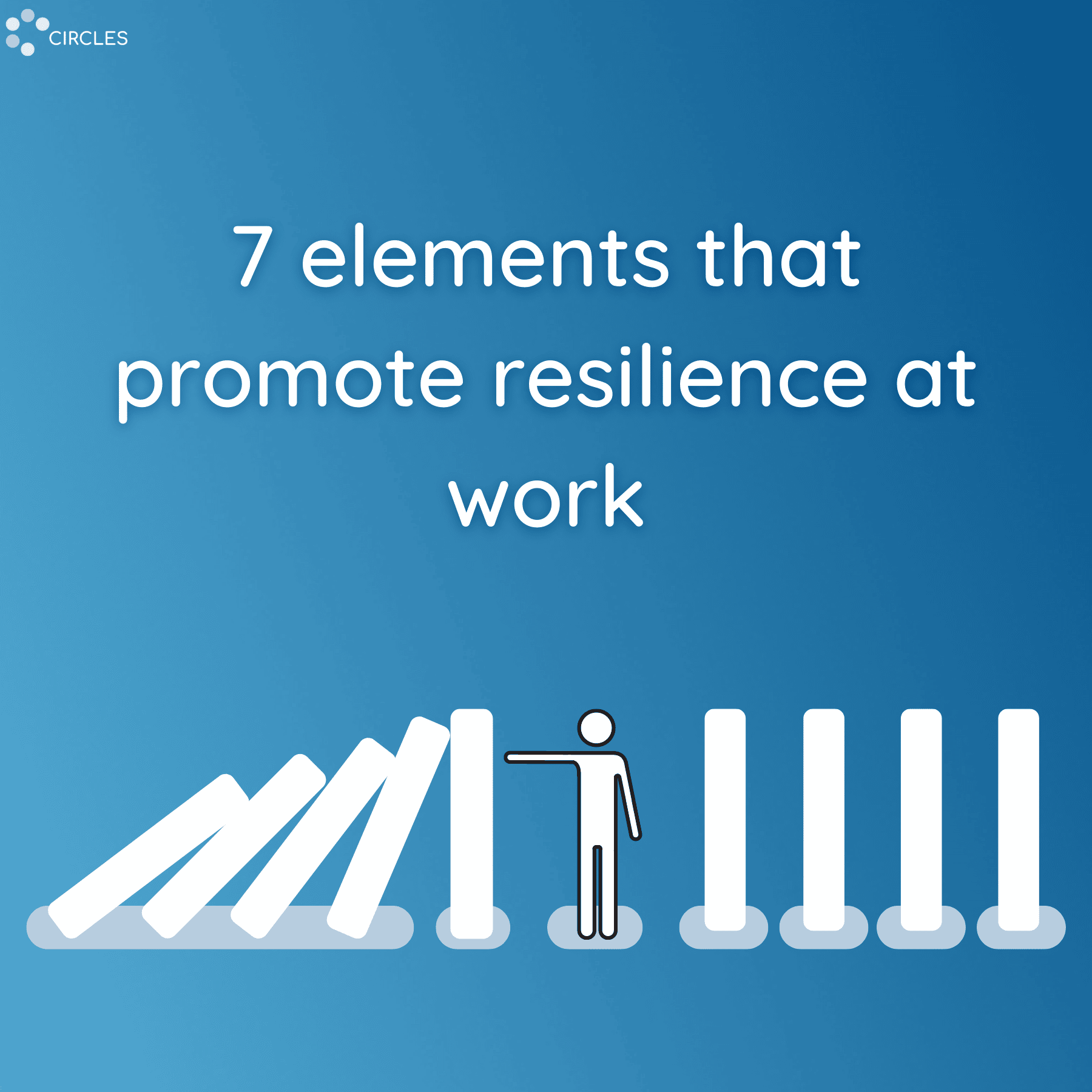There’s been a lot of buzz about resilience as an essential quality during setbacks. When the topic came up in a slack channel recently, one colleague shared that they recently stopped using the word altogether: in their experience, expecting resilience invalidates pain and lived experience by suggesting that people simply persevere.
Indeed, the internet defines resilience as “the capacity to recover quickly from difficulties; toughness,” a lofty ideal loaded with assumptions and probably blind to privilege. Likewise, a recent Forbes article suggests “know that you can adopt specific mind shifts to help create your best career year yet—and make the rest of your life pretty great, too,” placing the onus squarely on the individual.
Sure, there’s always that one annoying person sailing through life completely nonplussed, but often if you dig deeper, resilience (or lack thereof) flows from a combination of someone’s temperament, upbringing, life experience, cultural background, intersectionality, trauma, marginalization, and a whole host of other factors that attribute to a human’s capacity for “toughness”. If workplace resilience connotes bootstrapping–using every resource you have available–and not everyone has the same resources available, is it equitable to expect the same level of resilience out of everyone?
What if instead of tossing out the word resilience altogether, we brainstormed how to make workplace resilience a community effort, attainable for everyone?
A Tale of Resilience: Pretend We’re All Houseplants
Two new leaves just emerged from the top of my fiddle-leaf-fig, which is only significant if you understand the plant’s journey over the past few years.
I don’t remember when or how I brought said plant into my home, but after a cursory search on “how to care for a Ficus Lyrata“ I potted it, parked it near a front window, and watered it once a week per instructions. Which didn’t work for my plant. Which puzzled me.
Adding to my confusion were my other plants that thrive no matter what: over watered, under watered, near a window, in a dark room: it doesn’t matter, some plants just grow.
After months of struggle, I decided to move the fiddle-fig to the opposite side of our house, next to my desk which faces a bay window. I started researching what else the plant might need to thrive.
Years later, the thriving plant has remarkably grown several feet.
A combination of the following allowed my plant to experience resilience, and these elements just might work for humans at work, too:
- Space. The plant was crowded into a small pot and rootbound, so I repotted it into a much larger one, giving its roots room to grow. Is there mutual space for employees in your workplace to learn, share, listen and grow?
- Communication. Yeah, I talked to my plant. I also listened to it by noticing its failure to thrive, and responded by trying something new. One of our customers, Glassdoor, holds space for communication by hosting circles where employees can process together during crises. How is your workplace fostering communication between employees? For example: does everyone have the opportunity to gather together and process during a significant world event?
- Community. I put another plant next to the fiddle fig so their leaves could touch. According to Psychology Today, one way to practice resilience is to build social connections. Does your workplace offer regular touchpoints for small groups of employees?
- Individuality. Even though the internet instructions recommended treating this plant species a certain way, that didn’t work for my plant. Not every plant in the same species needs the same thing, and the same goes for people; in fact, companies can ensure inclusive teams by celebrating individual differences. Are employees in your workplace valued as complex individuals with a unique story?
- Wellness. My plant responded well to customized fertilizer. Does every individual in an organization have their whole-person healthcare needs met?
- Protection. Bugs tried taking up residence in my plant’s soil, until I purchased miniature sticky traps and planted them in the pot. For some, remote work may be the safeguard they need. “People of Color and underrepresented communities have benefitted from remote work arrangements. One of the reasons is that many have not had to cope with the prevalence of microaggressions, which are subtle forms of discrimination, in the workplace” What safeguards are in place for employees experiencing harassment, marginalization, or micro-aggressions?
- Native Environment. I learned house plants thrive when they experience their native environment. Since mine should be in a tropical rainforest, I began misting it with water and occasionally grabbing the tip of one of its leaves and swaying it back-and-forth, as if a breeze were blowing through. At Circles, we’ve been gathering in cross-cultural and functional circles, to learn each others’ stories and deepen our connections. Is there space in your organization to periodically learn, share and understand each other’s backgrounds?

There’s no getting around it: with both plants and people, in times of dramatic change, resilience makes all the difference.
Do you want a workplace filled with resilient employees? Be prepared to roll up your sleeves and get it in the dirt. Instead of hiring for, prescribing, or weaponizing resilience, try nurturing the soil of your organization’s garden, so that everyone planted there can flourish.
Rather than making resilience an unmitigated, autonomous expectation, let’s work together to create spaces promoting community resilience for everyone.
